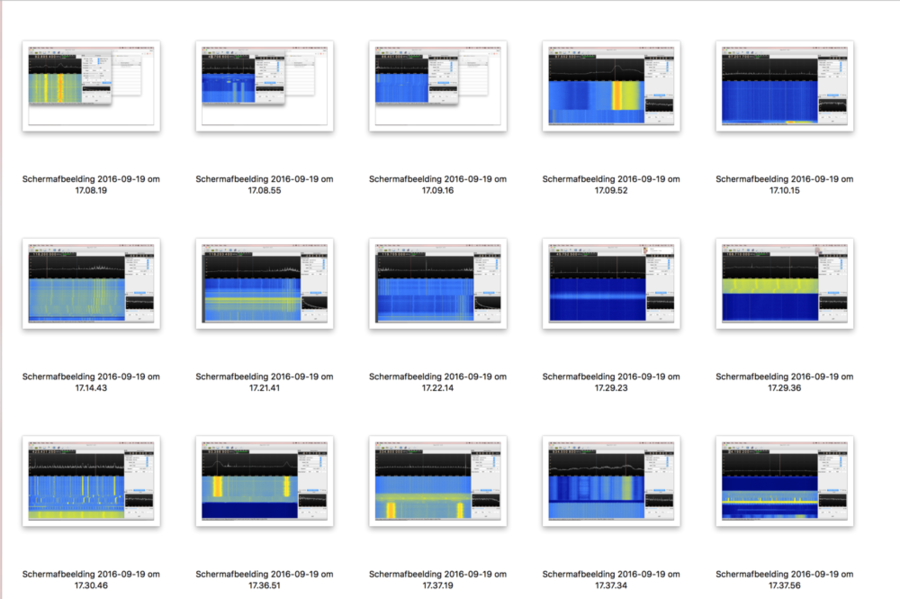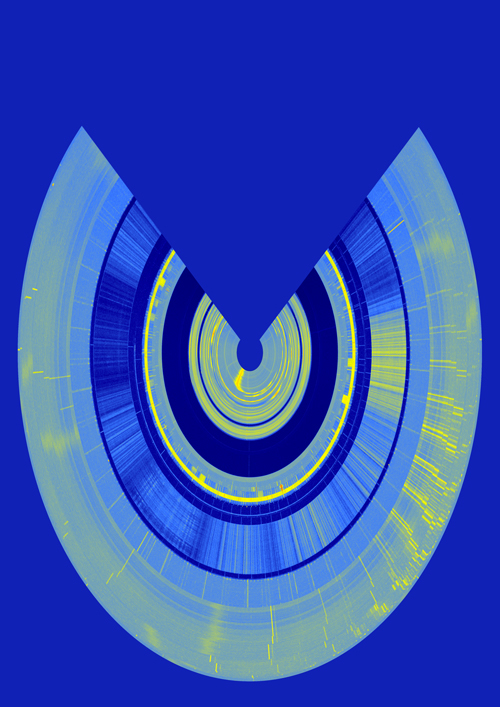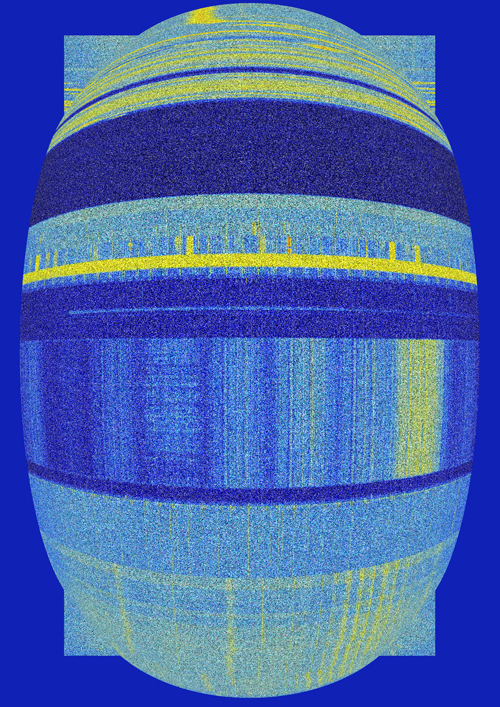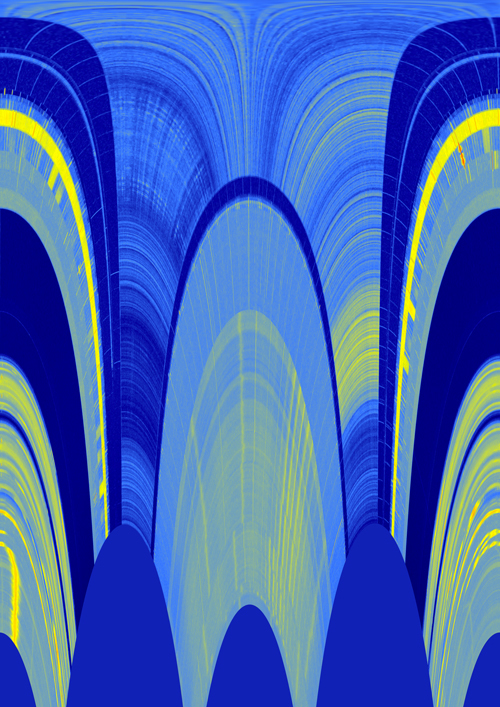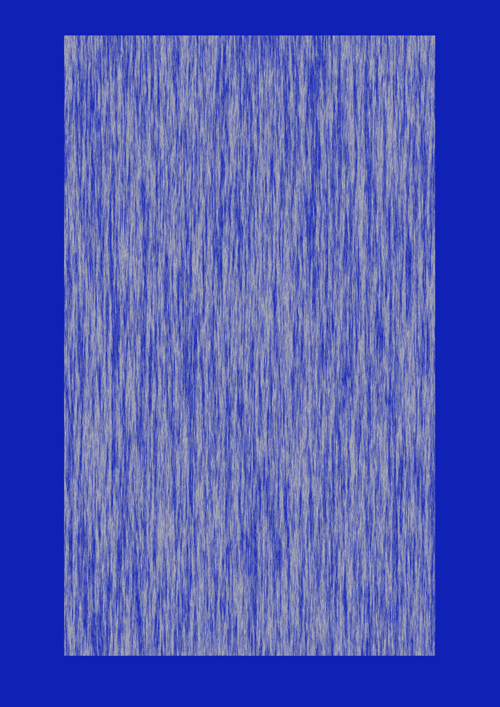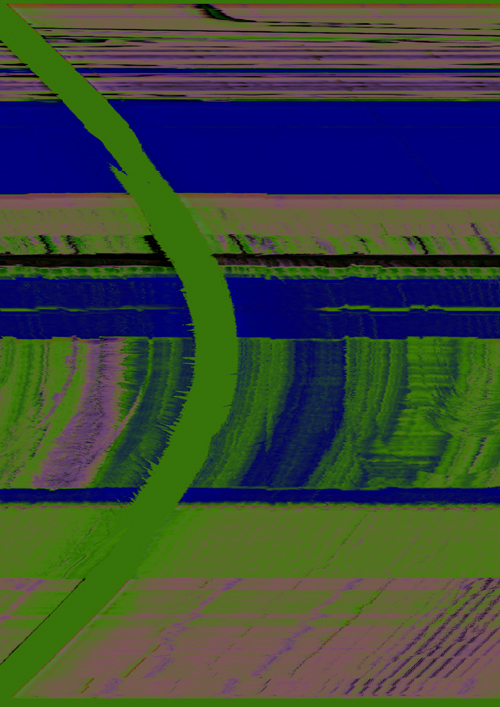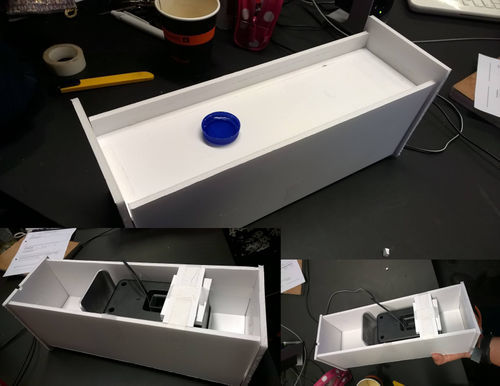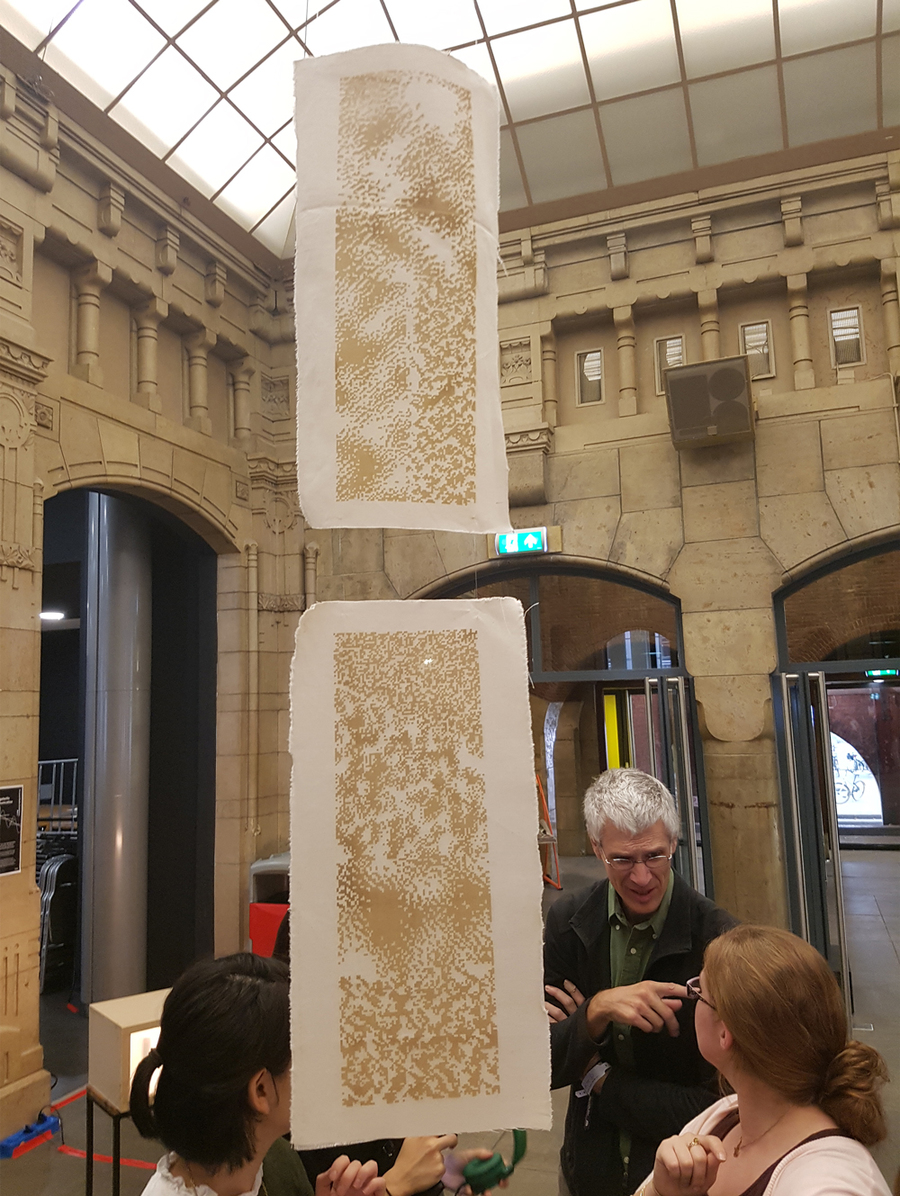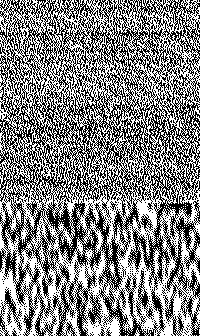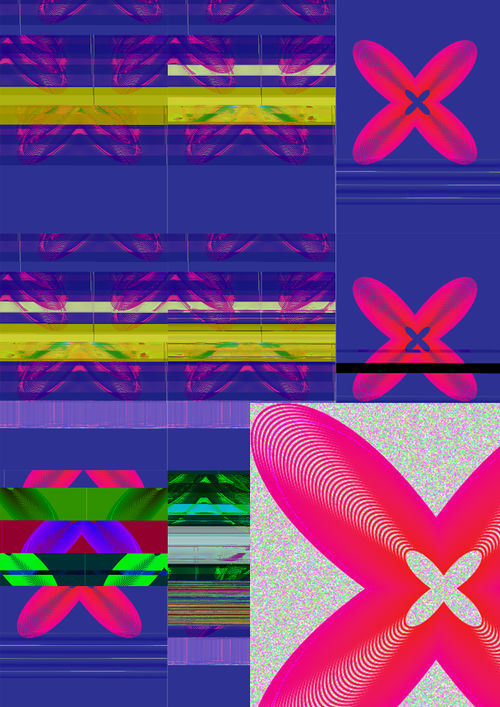Difference between revisions of "User:Naomimaria"
Naomimaria (talk | contribs) |
Naomimaria (talk | contribs) |
||
| Line 191: | Line 191: | ||
http://www.kraeutli.com/index.php/2009/09/01/human-antenna/ | http://www.kraeutli.com/index.php/2009/09/01/human-antenna/ | ||
http://www.thegreeneyl.com/appeel | http://www.thegreeneyl.com/appeel | ||
| + | https://www.youtube.com/watch?v=nVFdMZlHPuM | ||
Revision as of 11:52, 22 November 2016
Contents
Naomi van Maasakkers 0891744
Naomi is a graphic designer, she believes in communicating through color, language and experimental type which triggers and challenges the medium.
With these tools she creates new authentic images. Naomi focuses on printed- and web matters.
She is a creator with a strong focus on posters, her advanced skill returns back in her books, visual identities and websites.
Unravel the code V 2016/2017
Week 1 + 2

Inspiration Projects:
What do radio waves look like? Or, perhaps, what do you think they look like? Buzzing, concentric circles radiating outwards from a tower? Or maybe wavy lines undulating along the great expanse, hidden from the human visual range? The fact is they’re invisible, so we can’t see them without the aid of some kind of apparatus, and if light-painted visualizations of WiFi networks are any indication, they’re likely a sight to behold.
Visualization tests:
My week with the RTL SDR, at first I tried to work with the visuals, as I am a graphic designer, I screenshotted a ton of radio waves and limited my self in photoshop to only use their effects to see what the potential is just with radiowaves, without manually changing everything but making it an automatic process in photoshop. I think the images that came out are quite interesting. What I can do with them? I don't know but I'm going to reverse the process and put them in to audacity to create sounds with the new waves that came out
Week 3
Workshop 2
For workshop 2 we got the assignment to work with someone else's project. We got the project to translate "sound" to water waves. We built a box where you could put in a "cap" of water and the vibration of the water will be shown in this cap. We also tried to use very light fabric to create this vibration but this didn't work so we came with the solution to use a small cap because a big capacity of water didn't work with the capacity of the speakers. We experimented with music and with calling someone and using emotions in our voices.
Assignment
I worked with Jerry Estié on this assignment. We started out discussing radio and really wanted to something with transferring information in another way. For inspiration we decided to look into the past instead of into the future and looked up a database of sci-fi devices in books from the 40s to the 70s. We used the site Technovelgy for this. We found a project that was talking about which was about animated symbols to help those who haven't bothered to learn to read in a multimedia age. (From The Diamond Age, by Neal Stephenson. Published by Bantam Books in 1995). The word "mediaglyphic" just means a glyph (a symbol that imparts information nonverbally) created or seen in commercial media. The root word for media means middle; the media stands between us and the events or things it covers. We decided to take this what once was a sciencefiction project to this new era. Now a days when you scroll to facebook, newspapers, newspapers on the web, we mainly look at images and small headlines, so we don't have to read too much. When I scroll to facebook I don't read anything anymore I just scroll and see pictures with a small text. So we want to critical look at this aspect and use gifs as news headlines. We started out with The New York times and decided to try to do an whole article. In the screenshot below you can see it's divided in colors, everytime a new sentence starts the color will change. Headlines are of course bigger than normal text. Below you can see the website with working gifs.
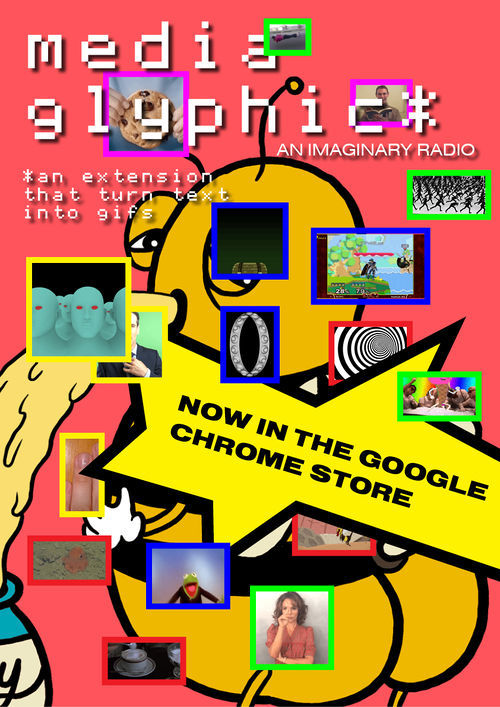
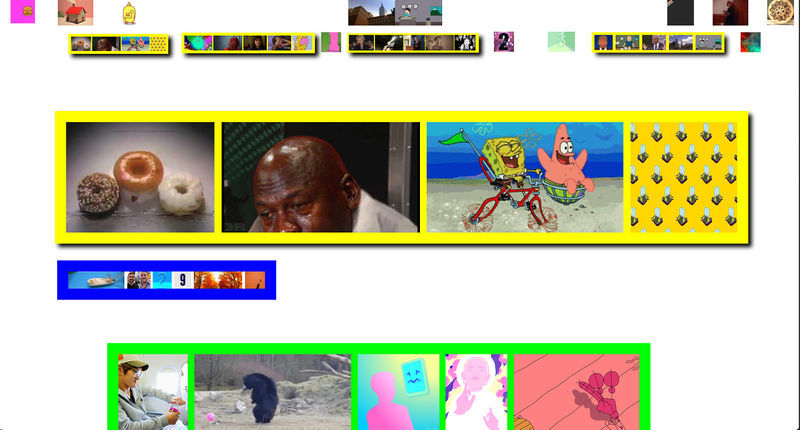
original article The Sweet Emotional Life of Bees
http://imaginaryradio.businesscatalyst.com/index.html
Poster: https://indd.adobe.com/view/3a5b7e9e-da62-4aa0-a221-1569b600f267
International Workshop
An intense fun day with the MICA students. Our group was Post-Radio aesthetics, we started out exchanging ideas with each other and tried to make it a whole concept. We were thinking about how we can't experience radio waves, so we started discussing how could we make these radio waves tactile without losing it's visual experience. Because our bodies cannot experience radio waves, how can we create a tactile, analog way to bridge that gap? We used a number of techniques to accomplish this goal. Through the use of a hand built radio receiver, we recorded a sound made it into an image in Photoshop. We converted this image into a bitmap and abstracted the bitmap in six different images of the radio waves. We engraver these six different iterations on fabric and created them on a knitting machine.
Q10 VISUALISING SOUND
Visualising Sound - Audio Responsive Generative Visuals | Made with Processing
Ernst Florens Friedrich Chladni (German: [ˈɛʁnst ˈfloːʁɛns ˈfʁiːdʁɪç ˈkladnɪ]; 30 November 1756 – 3 April 1827) was a German physicist and musician. His most important work, for which he is sometimes labeled the father of acoustics, included research on vibrating plates and the calculation of the speed of sound for different gases.[1] He also undertook pioneering work in the study of meteorites and so is also regarded by some as the father of meteoritics.[2]



When looking into cymatic frequencies and patterns I noticed that the patterns coming out of it could really look like spirgoraph art.
She’s a Rainbow: Notated in Color. Our intention is to visually represent how music flows from note to note, and how combinations and repetitions create beautiful patterns that are as mesmerizing as music itself. Idea: Ana Gómez Bernaus Conceptualization: Ana Gómez Bernaus + Greg Abate Music Notation and Translation: Greg Abate Art Direction & Design: Ana Gómez Bernaus

New machine aesthetics: the radio paintings of Simon Ingram
In the early twentieth century, machine aesthetics were considered shorthand for a fascination for or celebration of the machine; a techno-utopianism and optimism driven by modern mechanised cultures. In 2012 the phrase 'new aesthetics' appeared, firstly as a response to the kinds of images that contemporary machines seemed to be producing and secondly to the redefinitions of aesthetic awareness that these networked aesthetic machines suggested.2 The argument is that human experience and sensory responses are being decentred at the same time that machines appear to be capable of producing works of art.3 New aesthetics suggests a new way to think about the relation between an artist and a machine. Rather than a human picking up a tool, like the brush as an extension of the human hand, the artist and his painting machine have become a very particular assemblage of ftows.


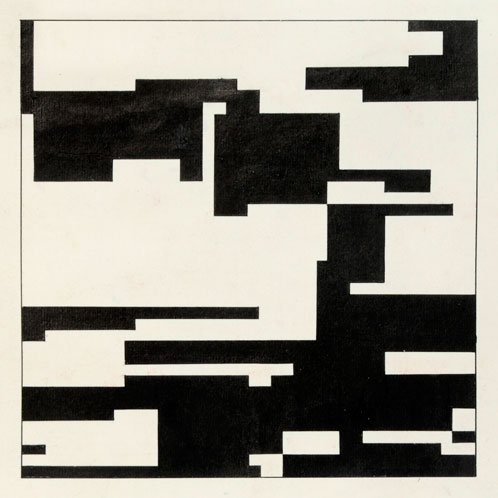
Hiroshi Kawano, Design 2-1, Markov Chain Pattern (1964)
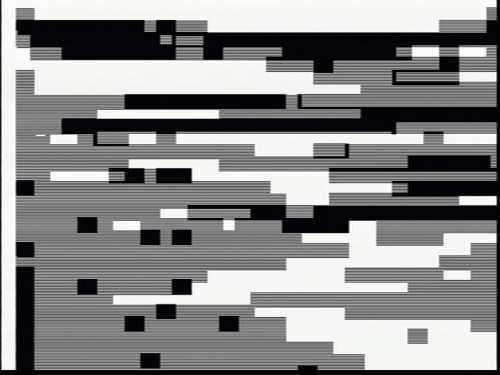
Jeff Donaldson, panasonic wj-mx12 video feedback (2012)
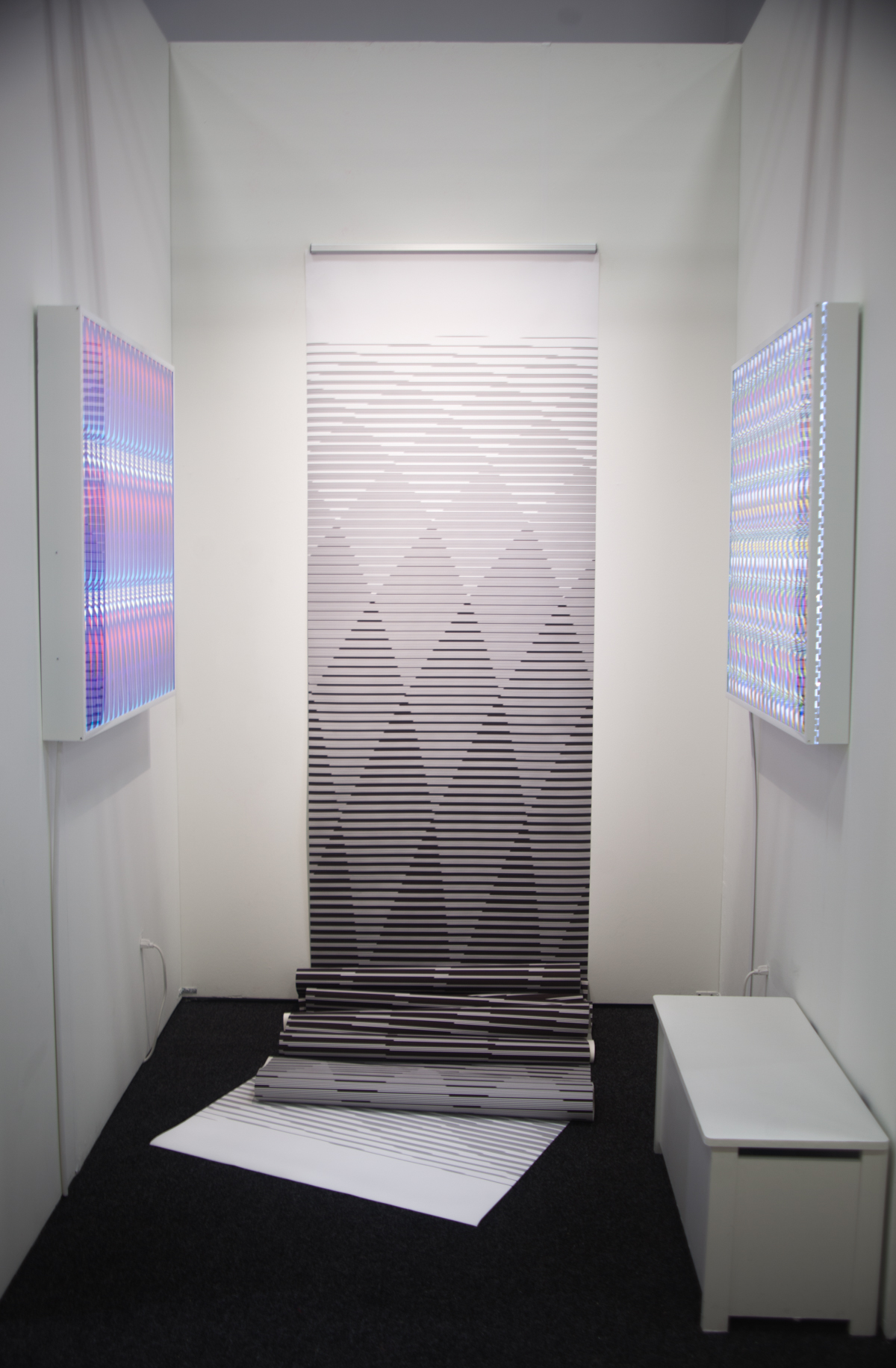 http://danieltemkin.com/
Circle Saved With The Wrong Proportions 36" x 25' (2016) at NADA art fair 2016
http://danieltemkin.com/
Circle Saved With The Wrong Proportions 36" x 25' (2016) at NADA art fair 2016
Typography to sound
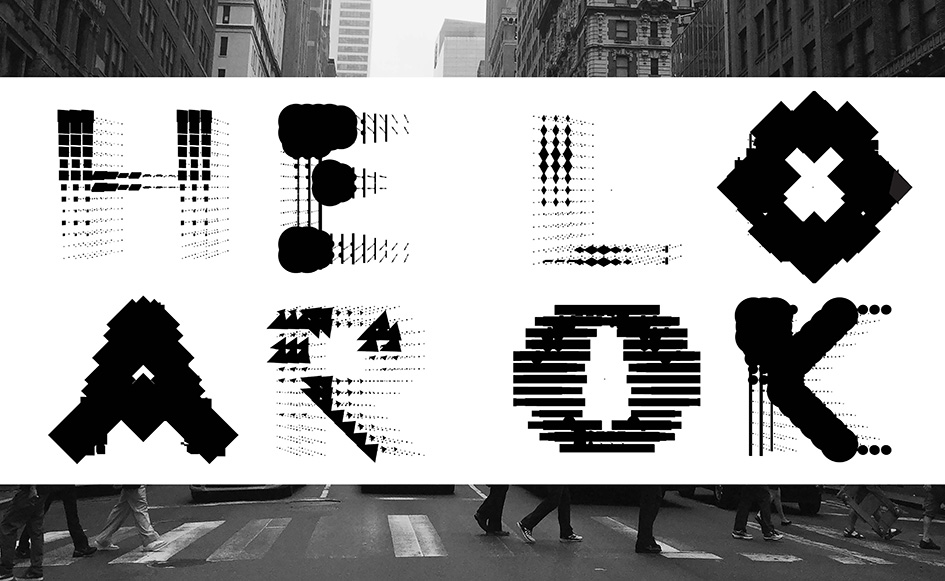

“I have always been interested in the topic of synesthesia and I wanted to explore typography together with sound” Zheng told Typeroom of her LOOK/HEAR project which explores the relationship between scenes and soundscapes, looking and hearing. “A system of aural and visual signals generates shifting typographic forms and triggers associations about people and environment”.
Sketches typeface:
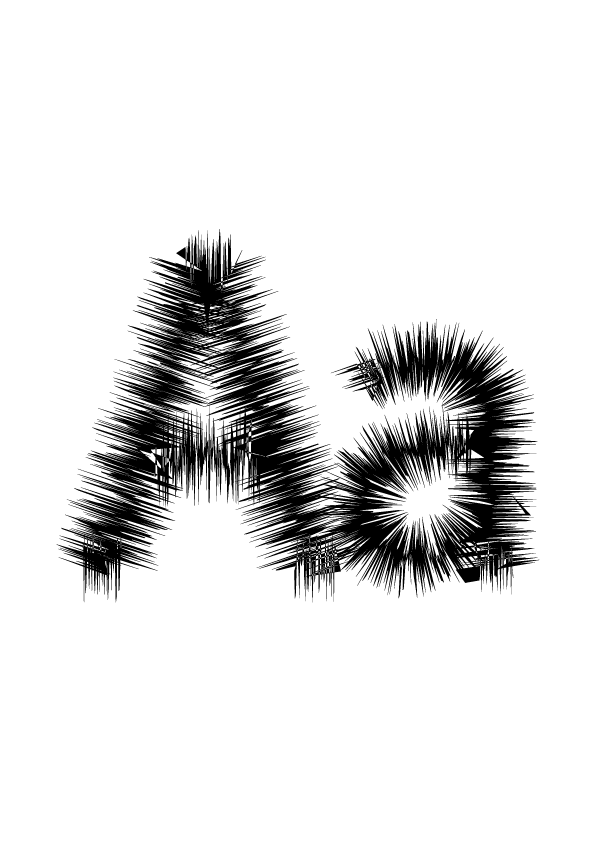 using actual soundwaves
using actual soundwaves
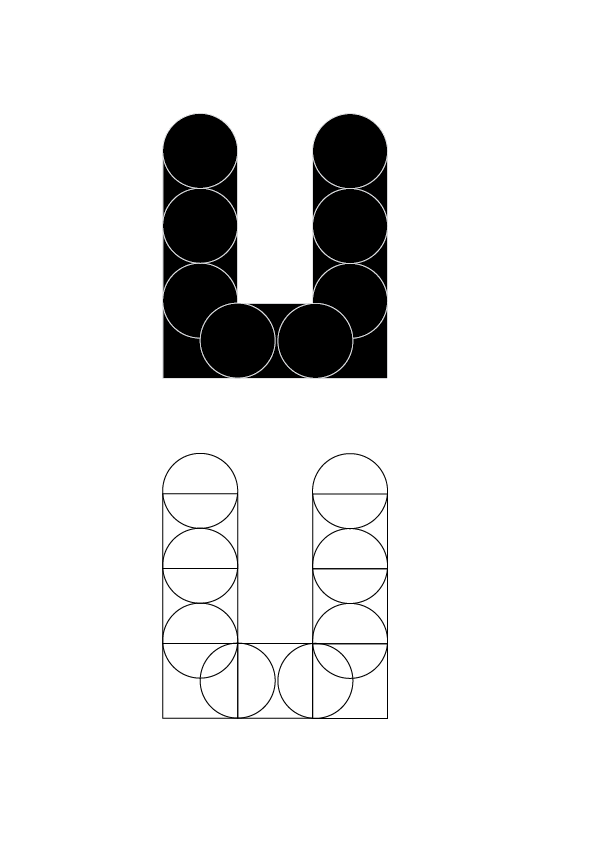 using shapes to create sound > processing
using shapes to create sound > processing
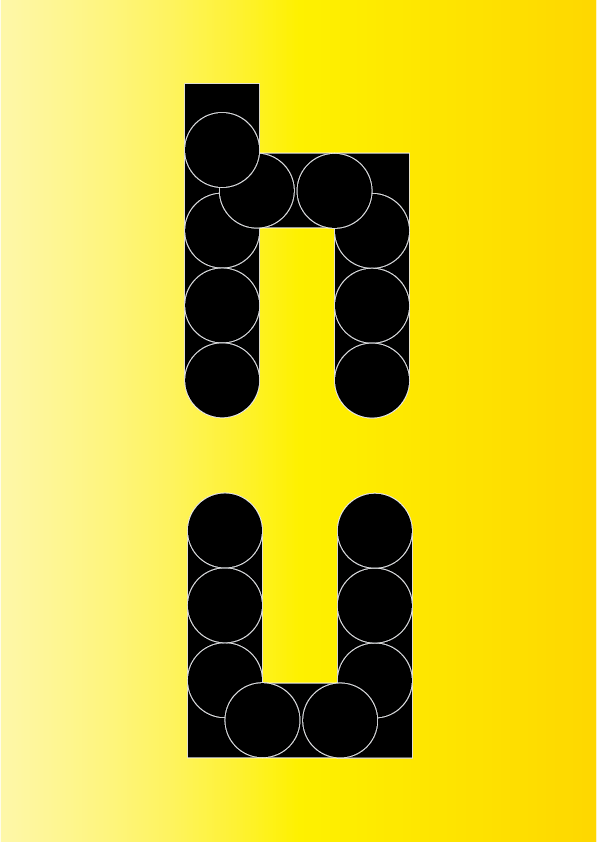
Q10 TV DISTORTION
Giving rules to certain emotions, for example create rectangles.


Kinect projects:
 – The front of the Posterwall with sensors somewhat visible at the bottom. (picture from http://banquethall.tumblr.com/)
– The front of the Posterwall with sensors somewhat visible at the bottom. (picture from http://banquethall.tumblr.com/)
Equipped with experience from the Polyarc project, we improved the n-Track software further for use in the LUST installation, Posterwall 3.0, presented in the exhibition Graphic Design: Now in production at the Walker Art Center in Minneapolis. We used an array of four Kinect sensors and our n-Track software to enable natural user interaction on an eight meter wide virtual poster wall. The poster wall software continuously generates posters from news, Twitter and blog posts and displays these on the wall. A user can browse through the generated posters by walking across the wall. Refined interaction takes place when the user is close enough to a single poster, that poster will then take focus and display a QR code that leads to a webpage with poster details.
Articles:
Why does moving your hands in front of the TV or radio antenna influence the reception?
This phenomenon can be especially frustrating when maintaining good reception requires the listener or viewer to remain posed in an awkward position. It is not limited to hands but can involve the entire body as well as other objects located nearby. In fact, even an airplane flying overhead can influence the reception of radio and TV signals, giving rise to a sort of raspy interference. In general, the locations and properties of materials in the vicinity of an antenna influence its performance, a property which is readily noticed when those materials are in motion.
Antennas are made of electrical conductors and, although they come in a wide variety of configurations, they often take the form of straight metal wires or wire coils. Examples are the "rabbit ears" and wire loops found on the backs of television sets (at least before cable came along), which are antennas tuned for VHF and UHF operation, respectively. When a transmitter drives an oscillating current in an antenna electromagnetic radiation--which carries both power and signals away from the source--is emitted. Anything that can carry a current can act like an antenna, although engineers work to design antennas that are optimized for efficiency, directionality, and steerability, among other things. A glance at an urban skyline reveals the wide range of designs engineers have developed for different applications.
When an antenna picks up electromagnetic radiation emitted elsewhere, an electrical current is induced in it. This current can be tapped and amplified by the radio or television receiver, allowing power and information to be communicated over large distances without direct electrical connection. In addition, the current in the receiving antenna is itself a secondary source of radiation. Not all of the received power is transferred to the receiving apparatus and the remainder is mainly emitted back into space. If no receiving apparatus is connected to the antenna, then most of the power intercepted will be re-radiated, with a small portion dissipated as heat. This entire reception and radiation process is termed "scattering" and the details depend on the size and shape of the antenna and the wavelength of the radiation in a complicated manner that is beyond the scope of this discussion.
Currents are also induced in tissue (as well as any other conducting or dielectric materials) upon exposure to electromagnetic fields. Although hands and bodies are not particularly efficient radiators, they will scatter a fraction of the power incident on them, depending on the RF frequency involved. Back at the receiver, the scattered signal will compete with the original signal from the transmitter, combining either constructively or destructively depending on the relative distances to the two signal sources. At the same time, the proximity of the scatterer to the antenna can influence how efficiently it transfers power to the receiver. Thus reception can be either improved or degraded, depending on the placement of one's body.
The effect the reader asked about will be most noticeable when the hands are close to the receiver, although very good scatterers (such as aircraft) can exert an effect at great distances. It will be most obvious when the size of the scatterer is at least comparable to the wavelength of the signal. For example, hand movements may influence the reception of VHF and UHF signals, but they will do little to AM radio signals having wavelengths of hundreds of meters, for example. Finally, it is worth noting that all of the bodies near the antenna will scatter the radiation that was already scattered by the others. The coupling between all the bodies involved can quickly become very complicated, and if there are many bodies present, the influence of any one is unlikely to be very great.
Antenna engineers make use of this coupling effect by placing parasitic antenna elements in close proximity to the part of the antenna, known as the driven element, that is attached to the appliance. All but one of the dipole wire elements in a television aerial, for example, are parasitic. They are intended to scatter incident radiation in such a way that all the contributions add constructively at the site of the driven element when the antenna is pointed toward the transmitter. The design of such antennas can still be a largely trial-and-error affair, with technicians moving elements from place to place in the laboratory as you might move your own body in order to pull in a weak broadcast.
Kinect expressions:

https://www.youtube.com/watch?v=Hi5kMNfgDS4
http://www.psychologyofgames.com/2013/07/can-the-xbox-ones-kinect-read-your-mind/
Body signals:
The human body has a peak absorption efficiency at around 100MHz (radio waves with a λ about 3m). Limbs and other parts of the body can act as a resonance chamber for higher frequencies. You can roughly estimate the frequency with peak absorption efficiency of an object or some structure to be:
f = c/(2*length)
or
λ = 2*length
But still, the human body isn't a very good antena for RF.
Concept ideas:
Tv starts responding when someone walks by and stands in front of the tv. (Based on the article why does moving your hands in front of the TV or radio antenna influence the reception)
Final concept:
The human body can distort the reception of a tv or audio signal. For our project we wanted to create an interpretation of this phenomenon. We want to make an interactive poster/installation that is influenced by the emotional state/age/gender of the viewer. Working together with: Jerry Estié.
Feedback:
- wat voor interacties
- wat voor schermen, doek dat belicht is
- wat is het storen?
- het medium interessant
- projectie
- beeld & geluid distorten
- sluitend geheel proberen te maken
- tonen distorten
- geluid in de ruimte
- oppervlaktes plaat materiaal
- licht & geluid
- gps verstoren
- vera: analoge storing met beeld, bijvoorbeeld een muur vol snippers bij een deur, die het geluid en het beeld verstoort
- beamers gebruiken
References: http://www.kraeutli.com/index.php/2009/09/01/human-antenna/ http://www.thegreeneyl.com/appeel https://www.youtube.com/watch?v=nVFdMZlHPuM

